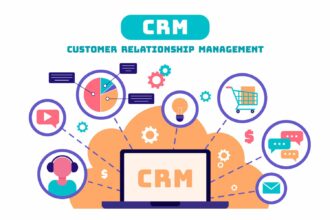Technology and the internet are continuously advancing. We are more reliant on technology and the internet than we were a couple of years back. Several years ago, technology was still trying to make its way to the top, and the internet was only accessible through computers and understood by a limited number of genius minds.
Now, people carry the internet in their pockets regardless of their location. As technology continues to wave, every department within the tech industry has been a recipient of change. One particular example is web development which has changed significantly over the years. How so? Let’s have a look.
Evolution of Web development
According to statistics for 2022, the worldwide website has over 1.9 billion websites, with hundreds of new websites added regularly. As the competition rises, companies are strongly considering upscaling their websites.
One of the core elements of website development and application is customization. Web designers must have basic coding knowledge to incorporate the basic structure of how a website or application should look once it’s completed.
Coding skills enable designers to make changes necessary to get the desired results. However, technological advancements have changed how web designers create websites over time. Today, in addition to developers, business owners can also build websites and apps on their own.
These changes are credited to the low-code-no-code movement. It allows users to specify what they want a computer to achieve without going into details or applying basic coding knowledge. This has resulted in the popularity of the low-code development platform.
Any designer who wants to make it big in the web or application development world can consider such a platform to understand software development better, even with little coding knowledge.
Elements of Web development
A few basic elements must be considered when designing a website. It is critical because it helps businesses achieve their objectives.
Layout
One of the crucial components of web design is the layout. Your goal is to attract the audience as soon as the webpage loads. Since it takes 50 milliseconds to form an opinion, your website’s layout determines the number of clicks.
A website’s visual appeal is important because it improves user experience. A good layout ensures that the content available on the website is readable and flows smoothly, creating a better informative experience for the visitors
The goal of the layout is to ensure the content is arranged in a pleasing and comprehensive way on the website.
Using whitespace or negative space gives various elements on the website room to breathe. Today, one of the widely adopted layout designs is to set up a featured image representative of a particular page on the website.
Navigation
Easy navigation is of utmost importance when it comes to web design. If the users are unable to navigate the website, there is no point in being creative with it. Keep the website simple to assist the audience in finding the information they are looking for.
Without navigation, a website appears unstructured. Various navigation tools can be used to break the website into different categories and groups. It enables users to navigate and understand the information more easily.
A website with good navigation works well with SEO. If the website runs poorly or is inaccessible by a link, chances are your website will have lower rankings. So, how to improve your website’s navigation? There are several ways.
Create a header that displays all navigation pages to ensure that users find the content in one accessible location. Another method is to establish an internal linking structure. It includes adding links on every page, enabling users to go back and forth between the website pages.
Color Scheme
This aspect of web design is less likely to be at the top of many developers’ lists, but it does make a huge difference. Using a good color scheme attracts attention and drives conversions. Selecting a color other than white or black helps store and process images more efficiently. It increases brand recognition and prompts visitors to take action.
When deciding upon a good color scheme, several factors must be considered. These include branding, trends, balance, and the audience. Start with the colors representing your brand and gradually change from there on. Go through the color trends to create a website that grabs the audience’s attention.
When establishing a color palette, consider creating a balance. It is achieved by incorporating a dominant color and layering out your palette by adding light colors. Compared to light, dark colors carry more visual weight.
Ensure the color represents the emotions your brand wants to convey—conduct thorough research on the target audience to help you choose the correct color scheme.
Loading Speed
As mentioned earlier, first impressions make or break your website. That is why developers strive hard to make websites aesthetically appealing and functional by adding various features and content. However, all this goes to waste when the website is not adequately optimized, simultaneously impacting its speed.
The loading speed is instrumental to users visiting the website. Research indicates that 40% of people leave if a webpage takes more than three seconds to load.
Speed also influences a website’s SEO ranking. According to Google, fast loading speed is crucial for the ranking factor. For websites to rank well on Google, the developers must ascertain that websites are well-optimized to load fast.
Content
Content is the backbone of every website. It plays a major role in search engine placement and is the primary reason why users visit your website. Hence, ensure the text is informative, easy to understand, and concise.
Besides attracting the target audience, high-quality content prompts users to take action on your website. Valuable content also contributes to the website’s search ranking. Considering the content’s quality and link, Google creates page ranking in search engine result pages.
Conclusion
Establishing a website helps organizations create an online presence. A website helps users learn about the products or services corporations are offering. It only makes sense that a website should have all the elements that improve the user’s experience.
Irrespective of the industry, creating an excellent web design impacts how the visitor will perceive your brand. The impressions your website leaves on users determine whether they’ll stay or give your competitors a chance. A few elements like the layout, color scheme, and navigation must be considered to develop good web design and ensure the organization’s success.









